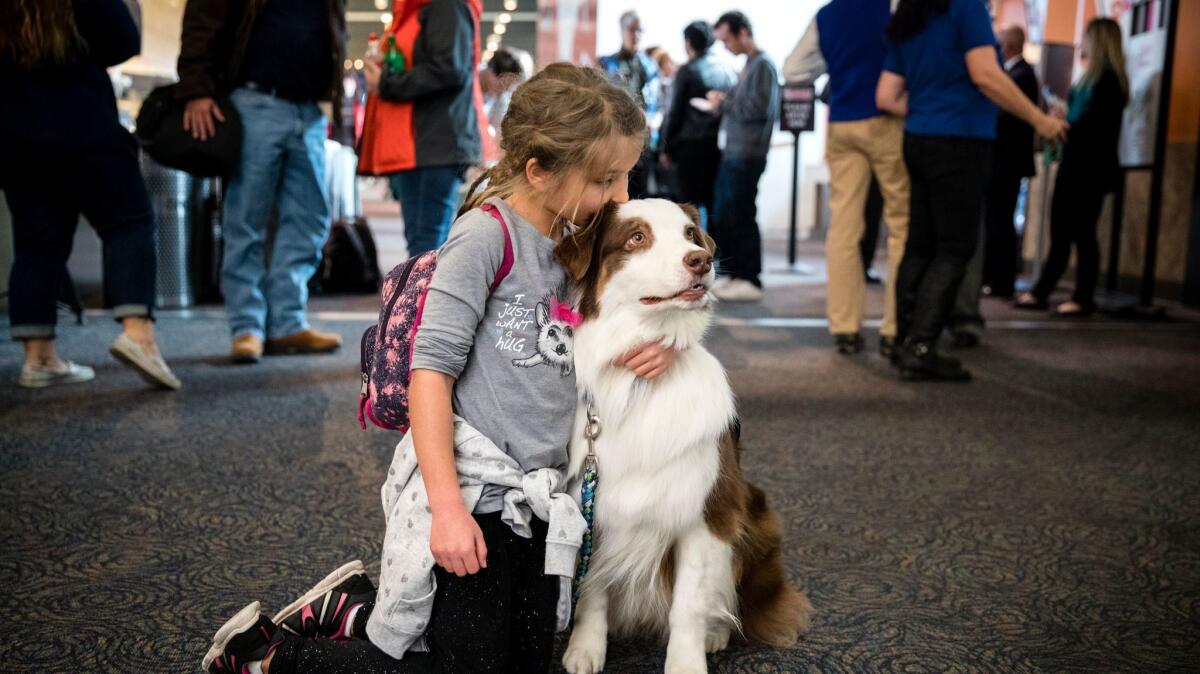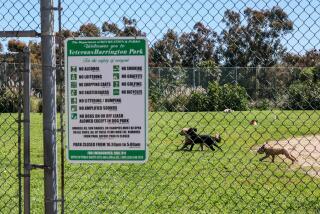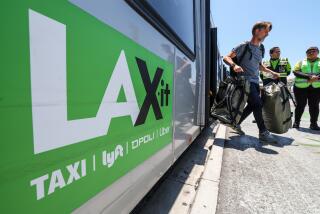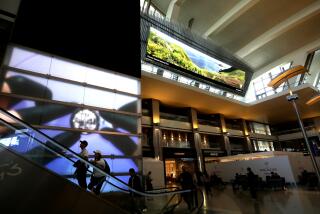Therapy dogs, bomb-sniffing canines and other pooches growing in number at airports

Airports across the country increasingly are turning to therapy dogs to help relieve the stress of flustered fliers.
But confusion and even conflict can result from the growing packs of pooches, after dogs used by security agents and emotional support animals traveling with passengers are factored in.
Therapy dogs can now be found in at least 46 of the nation’s largest airports, including Los Angeles International Airport, with dog programs most recently launched at the Hollywood Burbank Airport as well as airports in Connecticut and Colorado.
The dogs roam the terminals with their volunteer owners, reducing stress by letting passengers pet and socialize with the animals.
Therapy dogs have been deployed at airport terminals since the 1990s, but more and more airports have been requesting such dog programs in the last six years, said Billie Smith, executive director of the Alliance of Therapy Dogs, the largest nonprofit group that organizes volunteers and their dogs to visit airports.
“There are a lot of different types of dogs frittering around the airport now,” Smith said.
The growth of therapy dog programs has come at the same time that airport police and agents from the Transportation Security Administration have mobilized more dogs to sniff out explosives and drugs.
In addition, more fliers are traveling with emotional support animals, which are allowed by airlines into the cabins of planes with proper documentation.
“At Christmas time, I would say I saw 10 to 12 dogs traveling with passengers,” said Heidi Huebner, program director for the dog therapy program at LAX, known as Pets Unstressing Passengers or PUP. It employs more than 74 dogs.
There have been no reports of dog fights, bites or injuries because of dogs intermingling at airport terminals nationwide, but Smith and Huebner blame poorly trained animals traveling with passengers for barking and snapping at their therapy dogs.
“Dogs don’t like other dogs in their faces,” Smith said.
The added number of Transportation and Security Administration and airport police working with canines also makes it difficult for fliers to know which dogs they can pet and which they should leave alone. That’s why Smith said her therapy dogs wear vests, identifying them as friendly to humans.
To read more about the travel and tourism industries, follow @hugomartin on Twitter.
More to Read
Inside the business of entertainment
The Wide Shot brings you news, analysis and insights on everything from streaming wars to production — and what it all means for the future.
You may occasionally receive promotional content from the Los Angeles Times.











